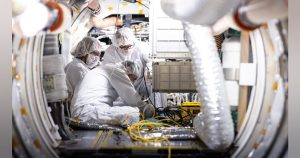Research Initiatives on Microsystems and Biology for Self-Repairing Systems
Date: February 3, 2025
Military researchers in the United States are calling on industry partners to explore innovative methods for regulating biological functions through the application of microsystems and molecular catalysts.
The Defense Advanced Research Projects Agency (DARPA), based in Arlington, Virginia, has published a solicitation (HR001125S0007) for the Microsystem Induced Catalysis (MICA) initiative. This program aims to advance the integration of electronic components with biological systems, facilitating the development of machines that possess electrical, mechanical, and biological attributes.

The Role of Artificial Cells
One of the key goals of MICA is the creation of synthetic cells that can perform essential functions similar to those of living cells. This includes capabilities in sensing, data processing, and self-repair, aligning with future military applications that enhance operational efficiency and reliability.
Initially announced in December, DARPA briefed stakeholders on the intricacies of the MICA program at the end of January.
Related: Combining Biology and Machines in Bio-Hybrid Creatures
Objectives of the MICA Initiative
The MICA project emphasizes harnessing microsystems to manage biological processes. It seeks to demonstrate hardware showcasing molecular catalysts fixed onto microsystem surfaces, influenced by forces generated through microsystem functionalities.
The initiative will include extensive modeling and simulations of these molecular microsystems, focusing on biomolecular catalysts that merge the capabilities of electronic components with biological logic.
Related: Research Insights on Bio-Hybrid Robots
Integration of Catalytic Molecules
A key component of the MICA program is the successful attachment of catalytic molecules to microsystems, which will empower biological functions. Emphasizing compatibility with traditional microelectronics fabrication, researchers are encouraged to consider how to assess molecular structure and functionality.
Teams are being formed for two main purposes: one focusing on the amalgamation of molecular design and microsystem architecture, and the other dedicated to performance modeling for system integration predictions.
Proposals are due by March 20, 2025.
For further inquiries, contact the DARPA BAA coordinator via email. More details can be found at SAM.gov.
Author: John Keller, Editor-in-Chief













